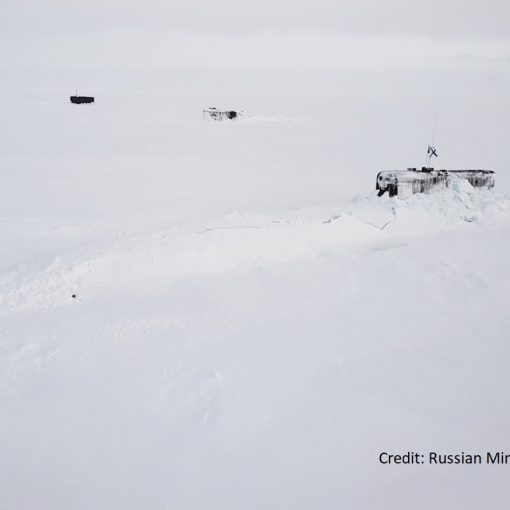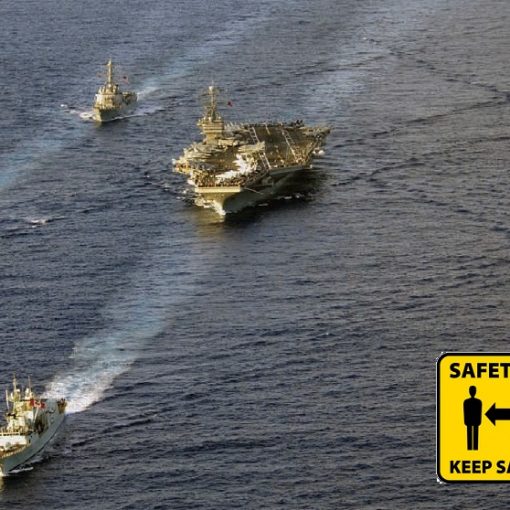Some of the issues in Professor Geoffrey Till’s recent paper found here (Naval War College Review, Winter 2010, pp. 33-60) may not apply to Canada, the strategic nuclear deterrent being a prime example. However, as well as being of interest in its own right, the work neatly summarises many key considerations and challenges that are every bit as relevant to the future development of the Canadian navy as to the RN.
Unsurprisingly, the key problems that the paper seeks to inform are twofold. First, the tension between expectations regarding commitments, that is the task or tasks that maritime forces can be committed to either as a single activity or concurrent activities, and resourcing. And, second, that between the differing capabilities required for the home and away games – as the author points out, forces designed for the preservation of good order in home waters are unlikely to be suitable for expeditionary operations and warfighting. So, how are these competing claims to be resolved?
In Canada’s case, these tensions can only be increased by the 2010 budget announcement. This indicated that the expected growth in defence funding underpinning the Canada First Defence Strategy (CFDS) of 2008 is to be curtailed from 2012. And the figures are not small, the reduction amounting to $525 million less than previously planned in 2012-2013 and $1 billion less annually thereafter. This reduction will likely mean that Canada has to make some difficult decisions about what it expects of its Armed Forces, collectively and as single services, and what it will pay to realise those expectations.
How does the paper help inform the debate? Its first question, “so what is the Navy for?”, brings out many considerations that are common to Canada. In particular, it emphasises the importance of defending trade and market access. More accurately, it tries to regenerate recognition of the importance of that activity, making the point that, in the UK’s case, the Ministry of Defence now overlooks maritime trade protection as a role of maritime forces. Transport Canada’s most recent available figures show that, in 2006, Canada’s overseas maritime trade totalled 208.9 million tonnes, and that trade with the US added another 129.5 million tonnes. This accounted for 47.7% of Canada’s trade with countries other than the US, and 3.6% of trade with the US at a value of $122.81 billion and $20.92 billion respectively. In considering these figures, it must be remembered that imports are generally “just enough, just in time”. There is little or no stockpiling of commodities as insurance against disruption of market sources or trade routes. It is also of note that energy imports and exports are included in the totals above and that, while most crude oil exports go to the US (valued in 2006 at $5.27 billion), imports are generally from much further afield, and that the value of those oil imports in 2006 was almost 3 times that of the exports to the US.
It can be concluded from this that Canada is also critically reliant on the ability to trade freely, and on stability of a globalized world order. It follows that this should be an issue recognised by the National Security Policy, so it is surprising that maritime trade receives no specific mention in Canada’s 2004 National Security Strategy, albeit that it is touched on in issues such as border security.
Despite this, the four required capability sets that the author draws from his conclusions on the importance of trade can certainly be related to the three Defence Roles set out by CFDS. The foreign policy of individual nations will determine the extent to which any of these are capability drivers, and their relative priority. But, again, there is much in common between the Canadian and UK approaches, in general principle at least. However, there are also important differences. Notably, unlike the UK, Canada has a Pacific coastline. This inevitably means that there is an imperative to look and engage both to the east and the west (as well as north), to an extent that is not mirrored in the UK. So, will the west-to-east shift of global power and influence require a future rebalancing of Canadian assets away from the Atlantic to the Pacific? In addition, the existence of the CCG as a part of the maritime force, an organization not mirrored in the UK’s structure, must be given due consideration in issues of Maritime Security.
Of all the issues raised by the article, a central factor influencing future direction is what could be termed the Afghanistan effect. With the withdrawal from Afghanistan imminent, the newly increased pressure on defence funding, and questions about the future willingness or unwillingness of governments to commit forces to lengthy and costly expeditionary campaigns on land, is this the time at which the flexibility of maritime forces will regain its former recognition? Specifically, recognition of capabilities that maritime forces can contribute that could, in many cases, be seen to be at a level or of a type that is more politically acceptable.
Professor Till’s detailed analysis concludes that the only real option for the UK is to re-baseline the UK’s Defence Program in order to match commitments to resources. Indeed, that is what is planned. The UK Government’s first airing of the issues under consideration is here in a February 2010 Green Paper. Whether the recent reduction in expected defence spending in Canada will require a similar approach, or whether the underlying principles of CFDS can still be achieved will be an interesting debate to follow. In this respect, Prof Till’s thoughts on the UK’s T45 Destroyer, Future Surface Combatant and Maritime Afloat Reach Sustainability programs have much relevance to, and common ground with, similar debates in Canada about the Joint Supply Ship and the Destroyer/Frigate replacement programs.



